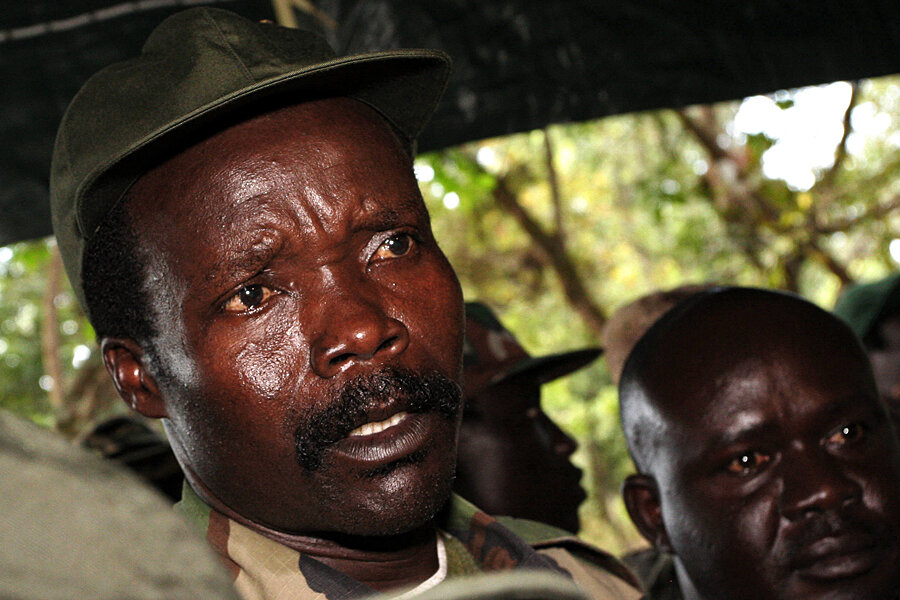White House sending Ospreys to hunt Joseph Kony and the LRA
Loading...
A version of this post appeared on Enough Said. The views expressed are the author's own.
On March 23, the Obama administration announced that it will bolster the counter-LRA mission by deploying at least four helicopters to help find Joseph Kony.
The helicopters, known as CV-22 Ospreys, will support the African Union Regional Task Force that is currently pursuing Kony and the Lord’s Resistance Army (LRA).
The high-speed, night-capable Ospreys, along with 150 Special Forces personnel to help fly and maintain the aircraft, will not fire on LRA locations but rather transport AU troops that are operating in the Central African Republic (CAR), South Sudan, and the Democratic Republic of the Congo (DRC).
President Barack Obama’s order to increase US Special Operations with the Osprey helicopters comes at a critical junction in the mission’s future and significantly helps boost the counter-LRA initiative.
Enough Project Field Researcher Kasper Agger said,
"The Osprey helicopters are a critical new piece of the puzzle in the mission to end the LRA. US and their African partner forces will now be able to act swiftly to apprehend Kony that continue to terrorize civilians in remote corners of central Africa. The deployment confirms U.S. resolve to the mission and sends a strong signal about the Obama administration’s commitment to atrocity prevention."
The Enough Project, alongside NGO partners The Resolve and Invisible Children have advocated for the deployment of additional helicopters as a critical element in tracking Kony and pursuing his forces in the remote areas where the LRA operates.
In December 2013, this was a focus of an Enough Project op-ed by Kasper Agger and Sasha Lezhnev published in The Hill, in which the authors stressed that “two to three additional helicopters...would go a long way in restricting the LRA’s ability to move freely and significantly increase the chances of capturing Kony.”
In response to the announcement, Enough Project Senior Policy Analyst, Sasha Lezhnev said:
"The new U.S. helicopters are like a turbo boost for the mission to find Kony. They give the operation the ability to act much more quickly on intelligence. The forces will now be able to search in several places at once, and when there is a report of Kony's whereabouts, the Ospreys can get there quickly. The White House deserves praise for bolstering the LRA mission, as backing off would allow Kony to regroup and perpetrate mass atrocities once again."
In a Washington Post article, Amanda Dory, Deputy Assistant Secretary of Defense for African affairs, said “[the helicopters] will make a significant difference in the ability to respond to leads” about Kony’s whereabouts. The approximately 300 US Special Operations troops in Uganda, are authorized to “provide information, advice and assistance,” and although they are combat-equipped, are prohibited from engaging LRA forces unless in self-defense.
The deployment of the Ospreys and the provision of forces strategically support counter-LRA efforts in four broad areas:
- increasing civilian protection,
- enhancing regional efforts to apprehend LRA top commanders,
- encouraging and facilitating LRA defections, and
- providing humanitarian assistance.
According to Grant Harris, a special assistant to President Obama and Senior African Affairs Director for the National Security Council, US supported efforts have been successful in removing three of the LRA’s top five commanders from the battlefield since May 2012; this includes credible reports that commander Okot Odhiambo – who was the LRA’s second-in-command and an International Criminal Court indictee – was killed late last year.
Moreover, the US Department of State’s press release on March 24 emphasizes US progress and continued engagement stating that:
"U.S. military advisors have helped to airdrop more than one million leaflets encouraging defections at seventeen locations across LRA-affected areas of the CAR, the DRC, and South Sudan. In early December 2013, 19 individuals, including nine Ugandan males, defected from the LRA in the CAR. This was the largest LRA defection since 2008 and signals that ongoing efforts to promote defections are working."
Over the past three decades, Kony and members of the LRA have been murdering, raping, and kidnapping tens of thousands of innocent civilians across central Africa.
As of December 2013, UN OCHA estimated that over 300,000 people were displaced or living as refugees across CAR, DRC, and South Sudan as a result of the LRA threat.
In an effort to increase the protection of civilians affected by the LRA, the US government has undertaken numerous programs to enhance community-based protection, promote demobilization and reintegration efforts of LRA fighters, and the rehabilitation of child soldiers. For example, the recent USAID-funded Secure, Empowered, Connected Communities Program in LRA-affected areas of the Central African Republic is assisting with community mapping, media training, and community radio activities
See also: Uganda: more US military assets in hunt for Kony, researcher Q&A - RFI







